The SaaS market is big.
Really big.
In fact, it’s expected to grow to a market size of $75.7 billion this year!
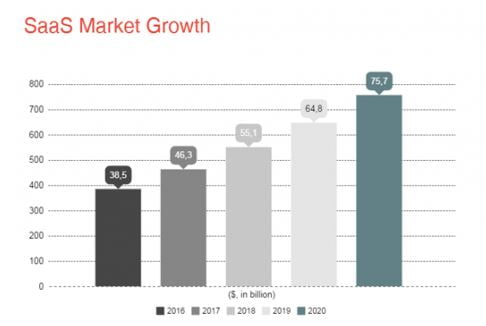
That’s more than the annual GDP of the Dominican Republic. 😱
And what does that mean for you as a SaaS business?
That there are more customers to acquire and a piece of the pie to take for yourself.
But, it isn’t that easy.
Many SaaS companies get left in the dust because they don’t have the right strategies to keep them strong.
That means competitors are getting ahead while you stress out about a marketing plan.
Not anymore, though.
You’re going to learn how to use SaaS content marketing to acquire customers, increase brand awareness, and establish thought leadership in today’s article.
Enjoy!
A quick refresher on content marketing
Okay. What is content marketing?
It’s the strategy of producing content (Think blog posts, videos, etc.) to attract customers to one’s brand and properties.
And, it’s totally new, right?
Not at all.
Content marketing has been used for centuries.
Let me explain.
I love to use the example of John Deere’s Furrow magazine.

Yes, the tractor company.
Their farming magazine has millions of subscribers, and it’s been around since 1895!
Yes, you read that right. Older than your great, great grandfather.
This magazine touches on topics related to farming, equipment, agriculture, and others that their customers would find beneficial.
And, not once do you see them boldly shove products in the reader’s face.
That’s content marketing: providing value and educating customers without trying to sell anything.
It builds trust. Loyalty. Authority.
BuzzStream, a leading authority in SEO, is a great example of content marketing potential.
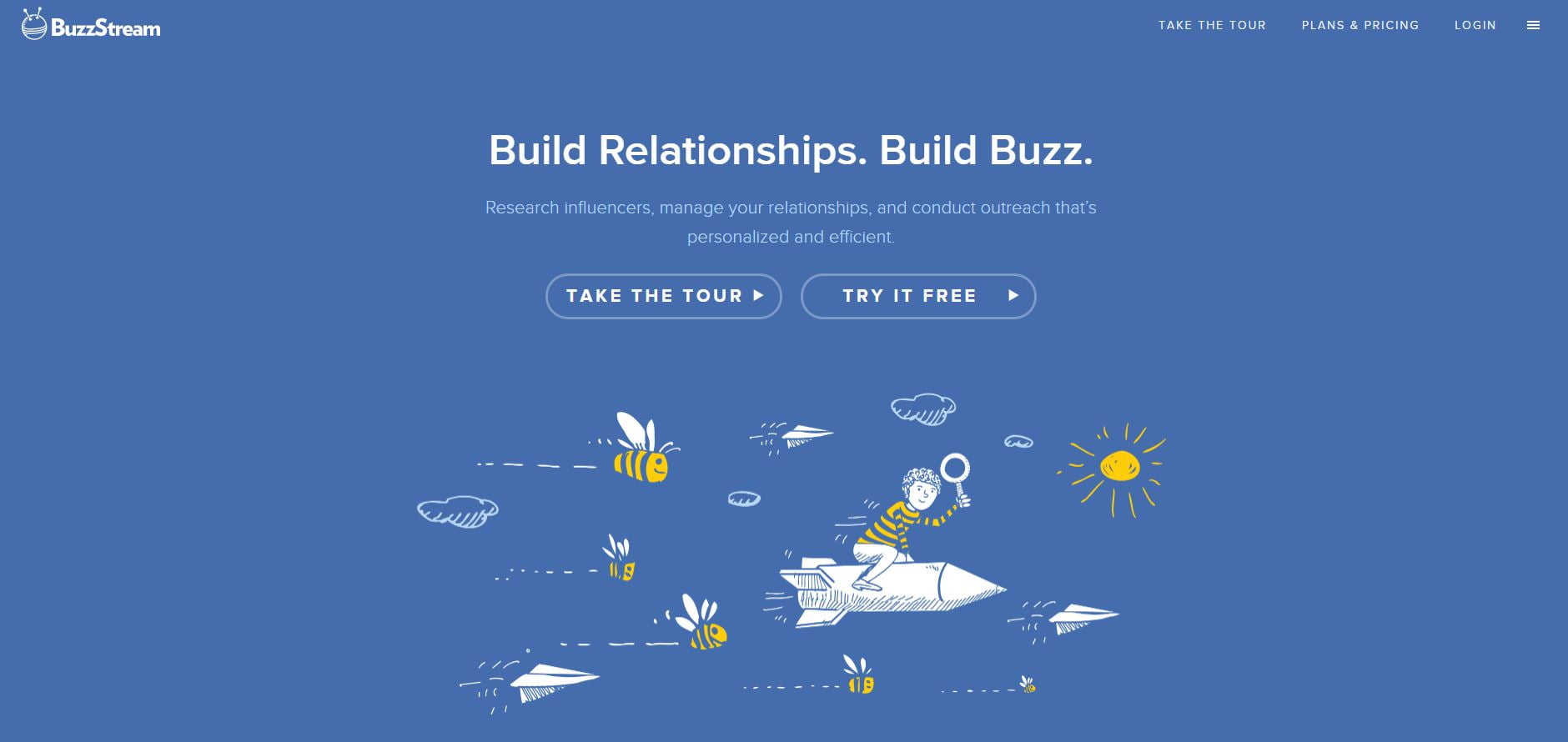
They launched a campaign that used primary research and original content that showed historical success in their field.
The content was evergreen, meaning that it would have purpose and function years from now. No fads here folks.
Gated content was also used to increase conversions for their email newsletters.
The results?
19 driven campaigns with 320 featured stories that generated 66,000 social shares, improved conversions, and broke BuzzStream’s record for sign-ups! 🔥
All in all, content marketing works. That’s the point I’m trying to get across.
Content also needs to be geared towards the buyer journey stages or flywheel stages. It looks like this:
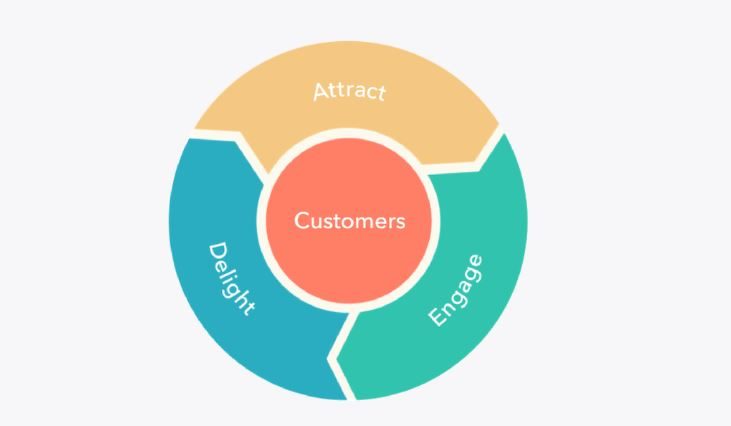
The general idea is that you:
- Attract: Help leads find your brand through blogs, videos, webinars, podcasts, and other forms of content.
- Engage: Offer lead magnets, consultations, newsletters, and engage directly with users.
- Delight: Continue delivering high-quality content and promotions that are tailored to each customer segment.
Each stage empowers the next. Hence why it’s a wheel.
Think of the flywheel similar to the typical buyer journey or funnel in the sense that:
- Top of the funnel (Attract): You’re casting a wide net with blog posts, YouTube videos, and other general content to get users coming to your properties.
- Middle of the funnel (Engage): You narrow down interested leads with free e-books, webinars, whitepapers, case studies, etc.
- Bottom of the funnel (Delight): Close leads with consultations, demos, and continue nurturing the relationship afterward.
Alright. With that out of the way, let’s get into the meat and potatoes—performing SaaS content marketing!
You should also watch this video of me doing a SaaS marketing and copywriting analysis to learn more.
SaaS content creation
The first step is to create content.
Then you distribute it and do all of the fancy things after.
These are what data says to be the most effective channels for content marketing right now.
Double-down and crush these content methods if you want to skyrocket your SaaS business.
Get your blogging on
Blogging is at the core of most SaaS content marketing strategies.
This is because it reaches all of the requirements for being S.M.A.R.T: specific, measurable, achievable, realistic, and timely.
Here’s a quick overview of S.M.A.R.T goals to understand what I mean:
Blogging turns your website into an authoritative hub, bringing hot leads directly to you.
Not someone else’s platform. (Which still has potential, though.)
It’s also easy to measure with KPIs like organic traffic, email subscribers, bounce rate, etc.
Blogging doesn’t require fancy equipment, either. Got a keyboard and a mouse? You’re good to go.
Keep in mind that 66.%7 of bloggers report strong results from publishing daily, as well.
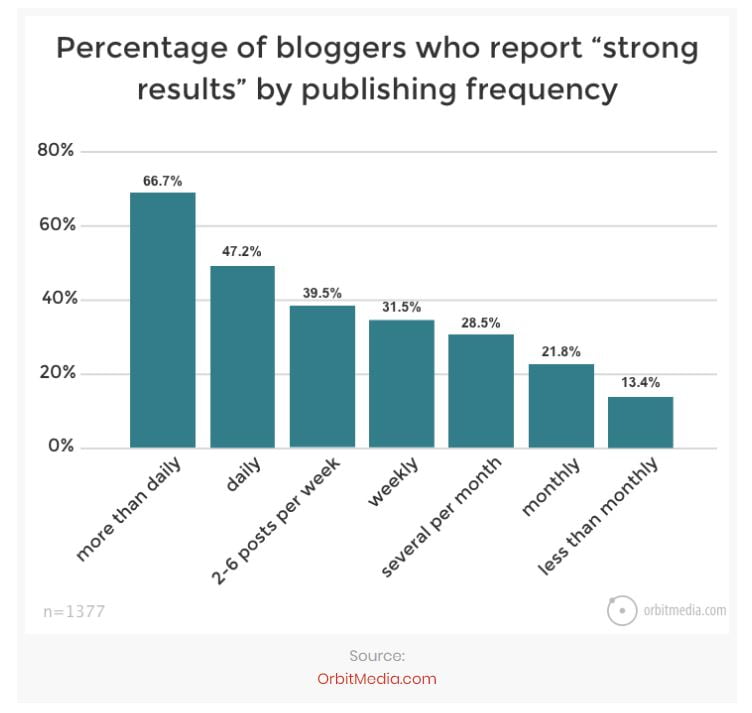
You should be blogging about topics that have your readers interest in mind.
What questions do they have? What problems are they experience? What are they trying to learn?
Educate them around these things and they will develop a connection with you.
Your services and products can be positioned as the solution, but 90% of content needs to be user-focused.
Some other tips I have for producing epic blog posts are:
- Long-form wins: It’s been proven again and again that long-form blog posts rank higher, generate the most social shares, and perform better than short articles. Write at least 1,000 words.
- Optimize for Google: Learn the fundamentals of keyword research and on-page SEO. A blueprint should be applied to every blog post for helping it rank higher. Use my SEO services if you need help.
- Make it practical: Give the readers tools, instructions, and examples so they can take action right away versus scratching their heads.
That brings me to my next point.
Get behind the camera
I’ve noticed a lot of top bloggers slowly moving away from writing articles to producing videos.
Why is this?
Simply because video marketing is crushing it right now.
87% of marketing professionals use video as a tool and you need to consider it for your SaaS company, too.
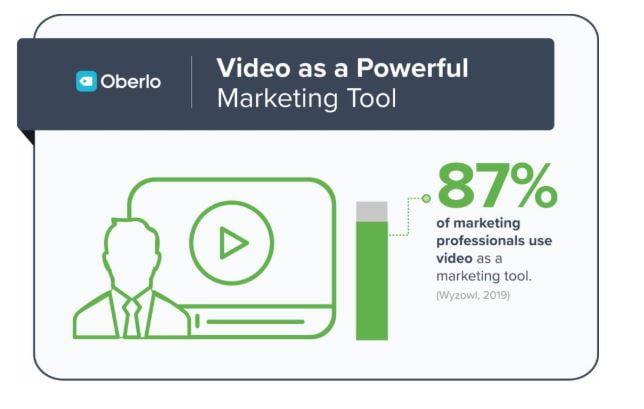
It’s a convenient form of content to consume because you simply sit and watch.
You can also find videos everywhere: YouTube, Vimeo, Instagram stories, Facebook, you name it.
I want to focus on YouTube in particular, though.
Despite more companies using it as a way to reach customers, it’s still undersaturated and potential for you to hop in before competitors do.
Videos don’t need Steven Speilberg-level production quality, either.
Slidecasts (Narrated slideshows) still dominate because it’s the actual content that matters.
Fancy effects, expensive cameras, and alike can come later as a cherry on top.
If the viewer learns what they wanted and receives value, they’ll be satisfied.
I think that production quality is very overrated and we worry way too much about it.
MVP is the way to go, baby!
Look at Brian Dean, for example:
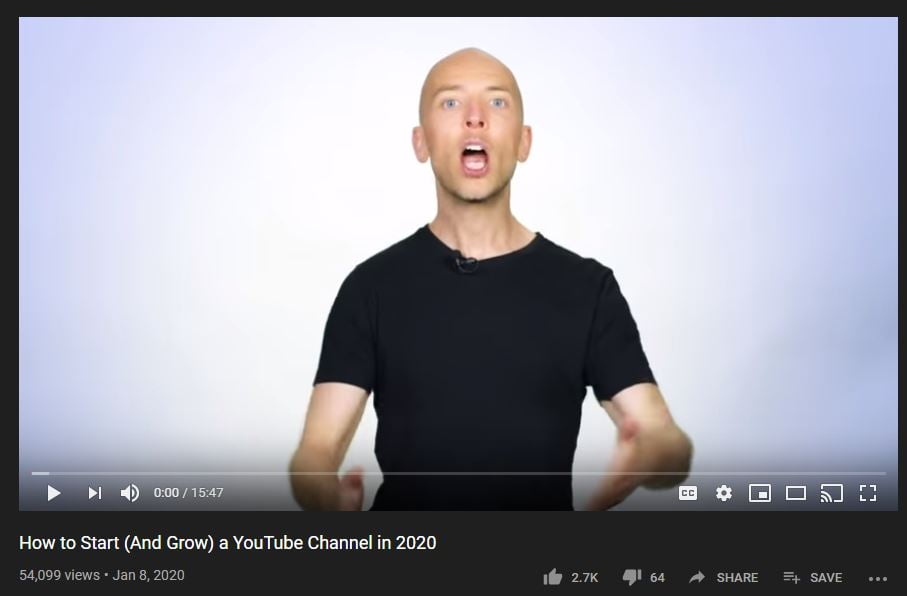
His videos are him standing in front of a green screen with the occasional screen capture.
That’s it. Yet, he has over 280,000 subscribers and is one of the biggest digital marketers on the internet.
Channel your inner Joe Rogan
Do you listen to any podcasts?
I love listening to Joe Rogan while working.
Heck, I’m listening to him right now!
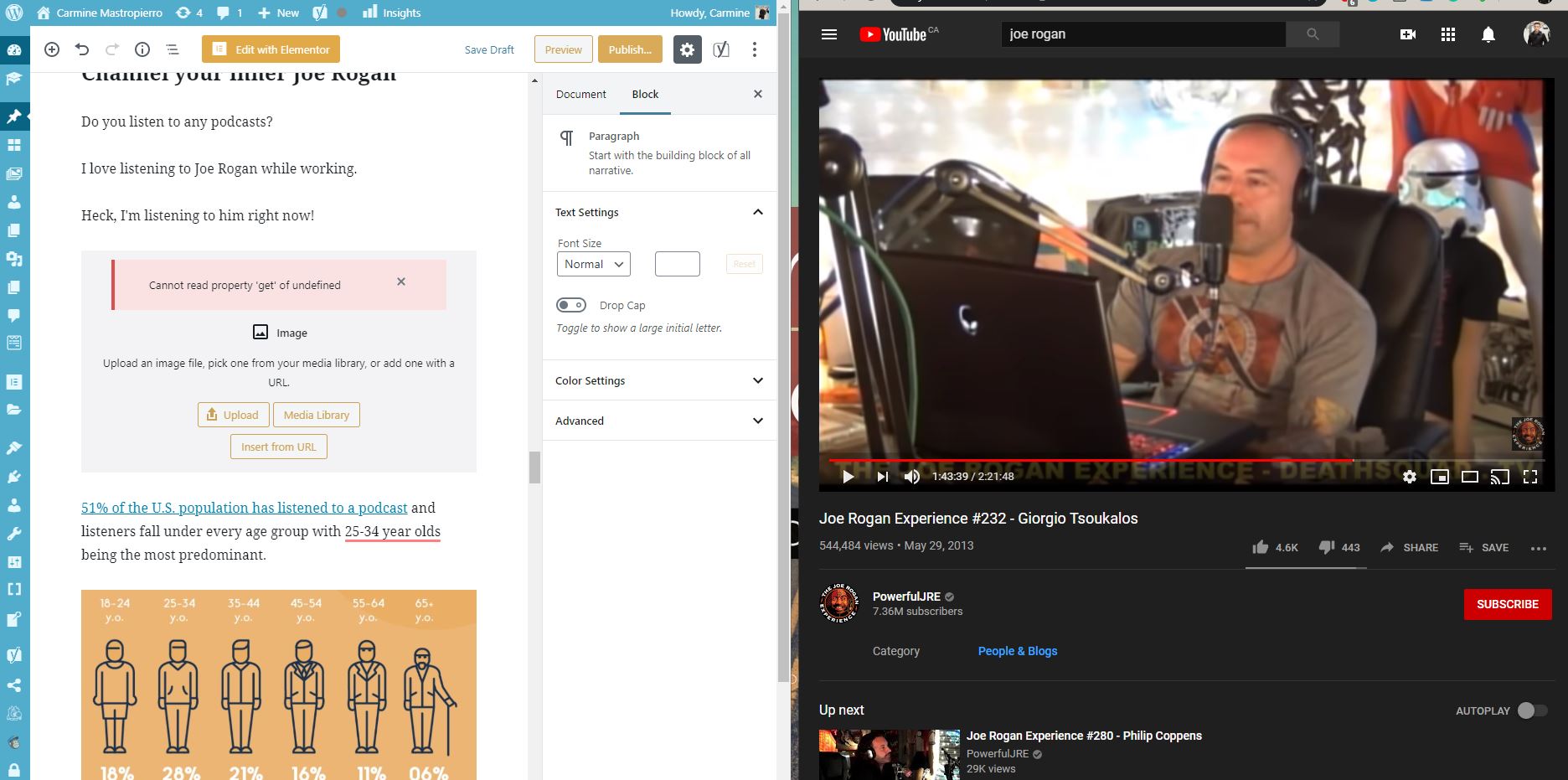
51% of the U.S. population has listened to a podcast and listeners fall under every age group with 25-34 year olds being the most predominant.
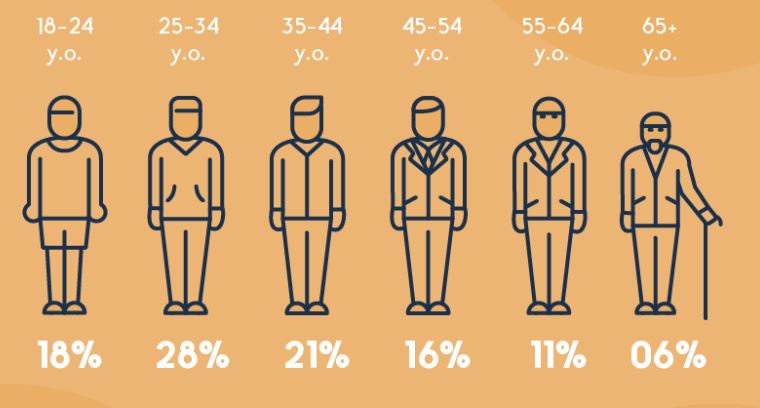
This is why they are a very effective SaaS content creation channel.
All you need is a good microphone to cut out static, breathe, and other background noises.
Then, install free software like OBS. Click one of the download options on the homepage depending on which operating system you use.
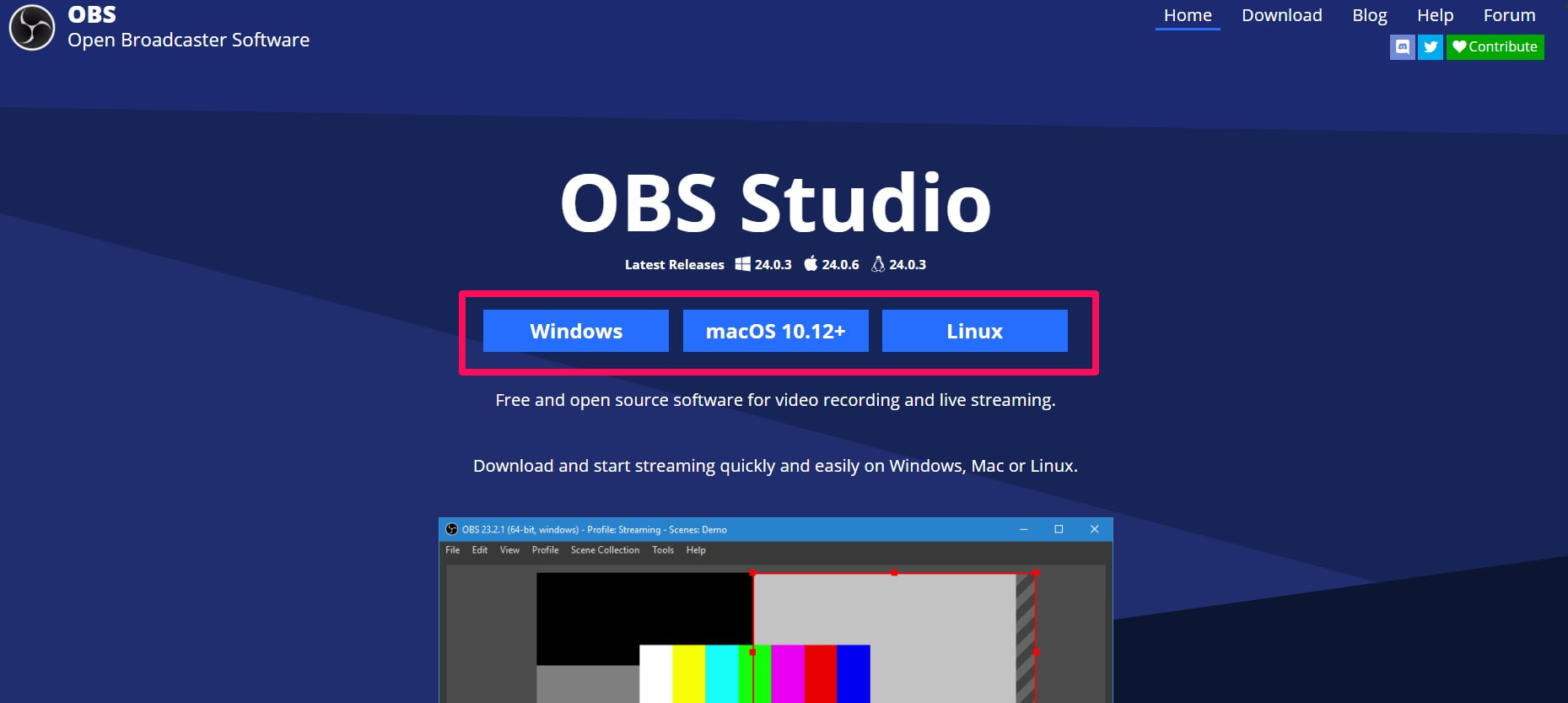
Launch the software and choose to record audio-only.
I recommend writing a podcast script or notes to base each episode on. This ensures the episode flows without hiccups.
Additionally, it’s efficient to take existing content like blog posts and repurpose them into podcast episodes.
This allows your SaaS company to take an omnichannel approach and it saves time from coming up with new ideas.
You can edit recordings with Sony Vegas, Final Cut Pro, Adobe, or other software.
Upload your podcast episode to platforms like:
- Soundcloud
- Spotify
- Google Play
- iTunes
- Sticher
- Blubrry
Let’s talk about what to do with the content once it’s published.
SaaS content distribution
As nice as it would be to kick back once you’ve published content, your job isn’t done yet, bucko!
In fact, it has just begun.
This is because you now need to distribute your content to get it seen by the world.
Try out the following techniques to do so.
Take advantage of PR opportunities
PR = public relations.
In other words, it’s getting your brand seen by the public and in a good light.
One of the most powerful PR strategies for a SaaS brand is influencer collaboration.
This involves creating a mutually beneficial relationship with another business or individual.
Normally they review your product, share it with their audience, or similar.
How can you do this?
First by using a tool like BuzzSumo. Type in a keyword on the homepage to begin.
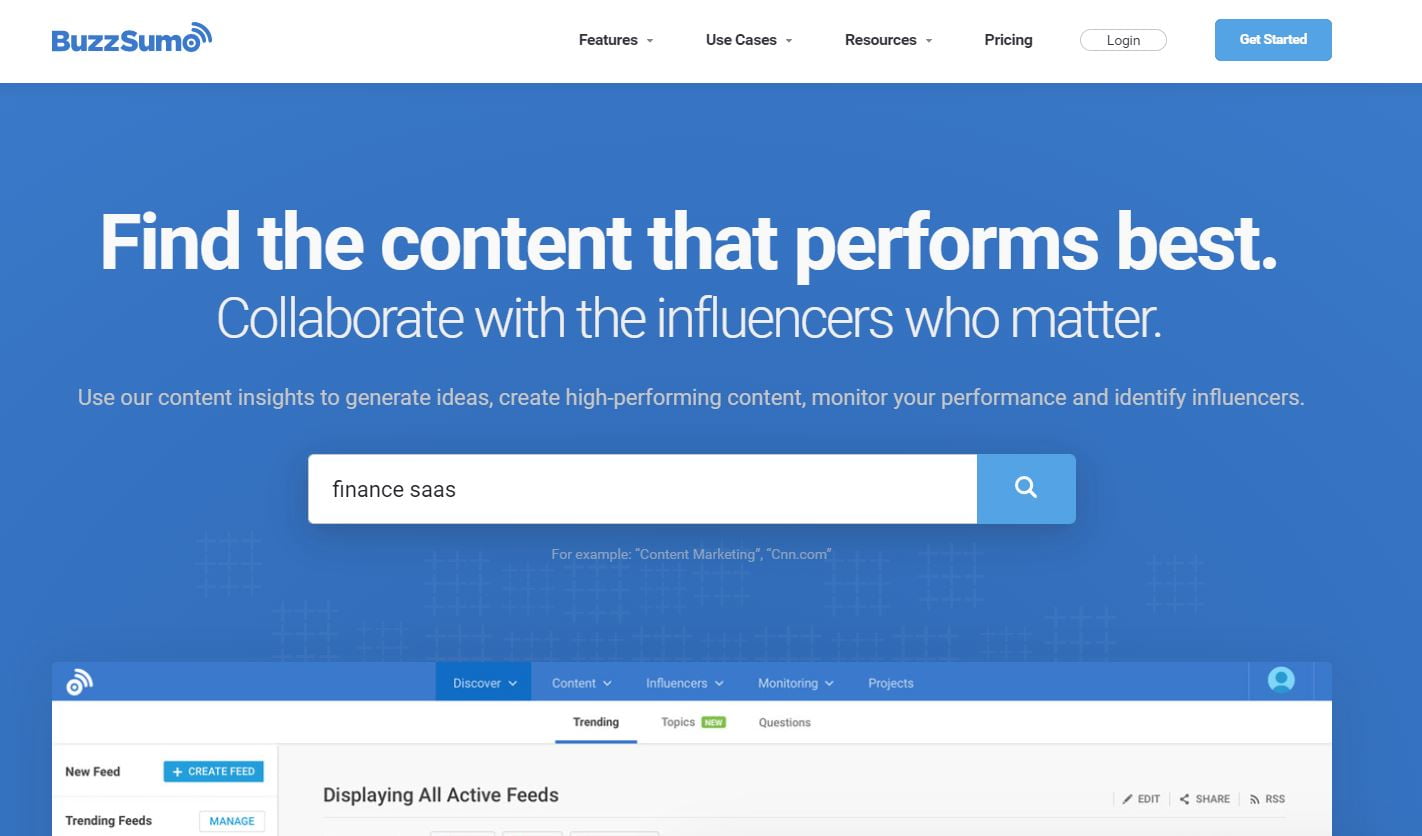
Then, select the influencer tab. This will list relevant influencers for you to contact for collaborations.
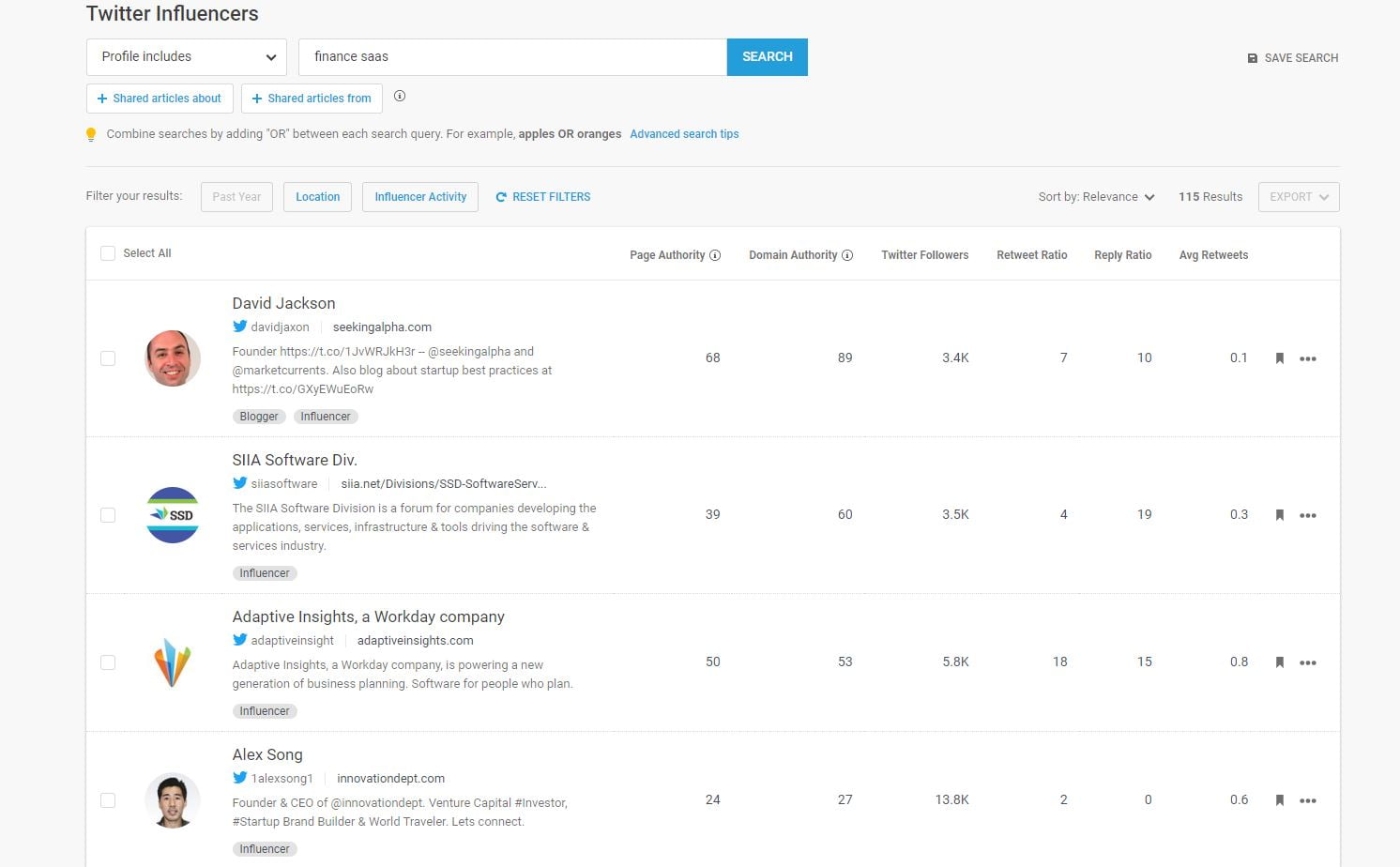
Reach out via the appropriate platform (Facebook, Twitter, etc.) and ask if they’d be open to working together.
Some PR campaigns you could do include:
- Giving them free access to your service for a review.
- Paying for social media shoutouts.
- Advertising in their email newsletter.
- Bringing them on your podcast or YouTube channel.
- Have them guest author on your blog or vice versa.
Related reading:
Email marketing isn’t dead
Email was invented in 1972.
That’s almost 50 years ago!
Despite this, many of us are glued to our emails and spend hours every day managing them.
40% of B2B marketers agree that email newsletters are the most critical part of their content marketing success, too.
Use an email marketing automation tool like HubSpot, Mailchimp, or Constant Contact. (Read my article on email marketing tools to see more.)
All of these allow you to embed forms, collect subscribers, and send out newsletters.
Drip campaigns can be made to automate workflows, as well.
Offer lead magnets like free ebooks or checklists in exchange for subscribing to boost conversions.
Imagine you earned 10,000 subscribers.
That’s 10,000 people you can reach at any given moment to promote new content!
Let SEO do its thing
If you follow my advice about learning the fundamentals of SEO, your content (Specially written) would continually compound in the SERPs.
And, that means more organic traffic and leads for you.
However, SEO takes a long time to pay off.
A big reason is that Google sandboxes every new website.
It’s like you’re a little kid again!
After that, they will begin to trust you once they see you’re continually publishing content and not doing anything sneaky. (I’m looking at you, Blackhat’s.)
Rand Fishkin, the co-founder of Moz, commented on his experience with the sandbox, saying:
“SEOmoz is finally sandbox free for the first time since our move to this domain 9 months ago. We aren’t alone, either. Many folks had sites escape, and I’m happy for all of them. It looks like our 12,000+ all-natural links (never link built for this site, just link-baited) finally paid off.“
In sum, be patient with content marketing and SEO. It’s a marathon, not a sprint.
Final thoughts on SaaS content marketing
Doing content marketing for a SaaS business is one of the best choices you can make.
It builds a brand into a thought leader, and authority, and generates organic leads. Who doesn’t want that?
The first step is to produce valuable content through blog posts, videos, and podcasts.
Promote these through PR campaigns, email marketing, and SEO to maximize reach and ROI.
Focus on helping the reader and naturally, they will land in your funnel and become a happy customer.
Never over-sell or force products into the content. People can see right through that.
To learn more about content writing and marketing, explore my online courses.














